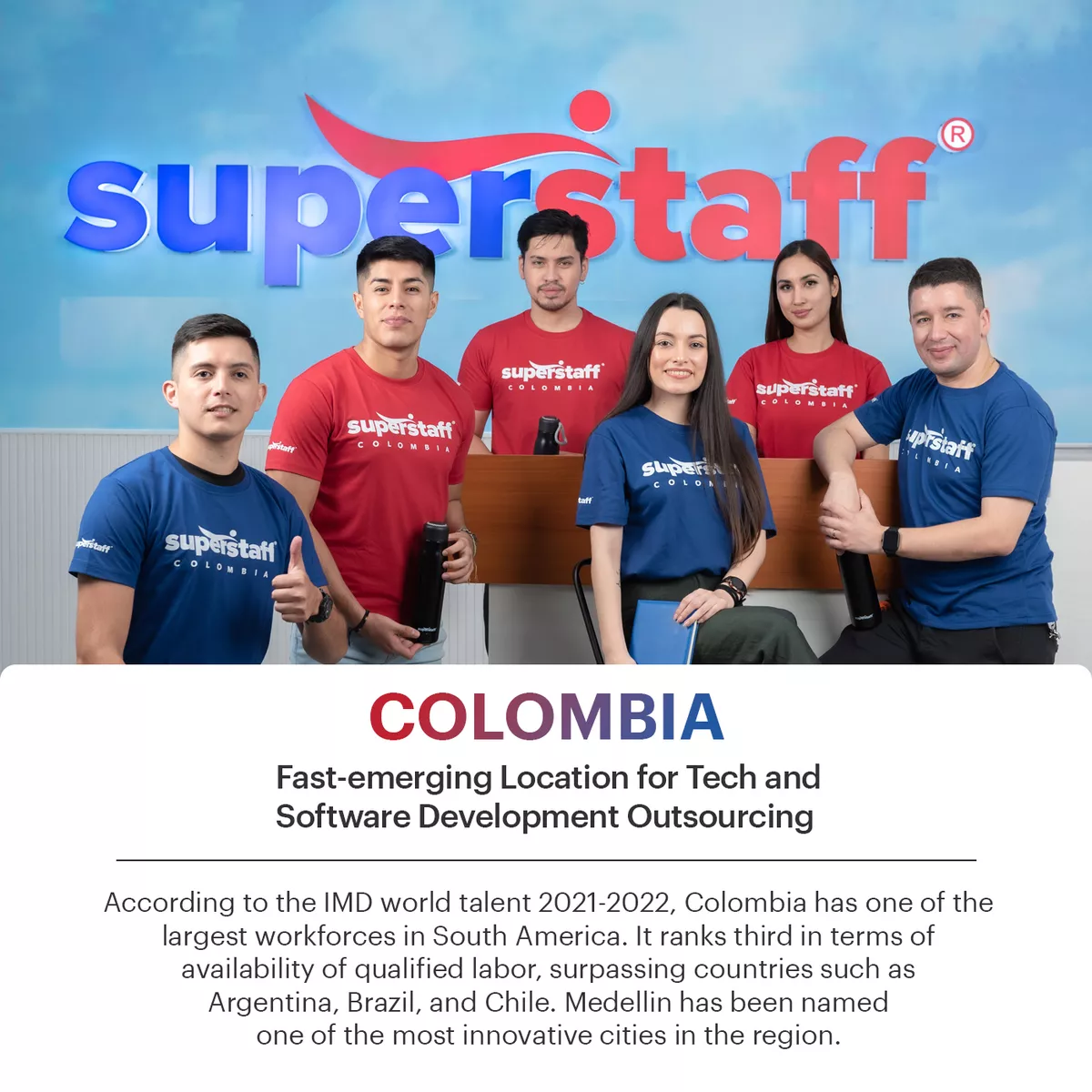
Customers are the lifeblood of a business. Decision makers must therefore exhaust all efforts to attract prospective customers and drive repeat business. The way to do this is by delivering exceptional customer service through outsourced call centers with a BPO partner.
In your research, you’ll discover two key outsourcing models — nearshore vs. offshore. Which is the ideal strategy for you? Let’s find out.
Nearshore vs. Offshore Call Centers: What Are the Differences?
Outsourcing has two primary models: nearshore and offshore outsourcing
Both are excellent strategic options, but what will work best for your specific business model and industry will depend on numerous factors. Before deciding on one, you must compare nearshore vs. offshore outsourcing solutions side by side to find out which model fits your company best.
Here are the critical differences between nearshore outsourcing vs. offshore outsourcing call centers:
Offshore Call Center
Offshoring is when you delegate customer service tasks to an external provider far from your home country, usually in a different time zone. Some popular offshore outsourcing destinations for U.S. companies include the Philippines, India, Ukraine, and Poland.
For years, offshoring has become a standard practice for thousands of businesses in the U.S. to increase profit margins and reduce unnecessary expenditures.
Advantages of Offshore Call Centers
Significant Cost Savings
One of the most notable features of offshoring is its cost-saving opportunities.
An offshore company offers one of the most economical and cost-efficient pricing models compared to other outsourcing solutions. When you’re offshoring to the Philippines, you can slash up to 60% on labor costs and 40 to 50% on operating expenses. This allows you to allocate more funds towards projects that will fuel substantial growth.
Plenty of Service Providers
Around 1970, U.S. manufacturing companies pioneered the offshoring trend for one primary objective: offloading their non-core business processes. Since then, many companies have noticed its potential lucrative returns, sparking worldwide interest in outsourcing to enhance efficiency, diversify workforces, and improve companies’ bottom line.
The popularity of offshoring created a wealth of opportunities for the Philippines, catalyzing the expansion of its BPO industry. The support from the nation’s government laid the foundation for the sector to flourish, leading to the development of more local BPO companies.
A study found that about 10 to 15% of the global BPO market is represented by the Philippines — and industry experts expect this number to grow in the future.
What Is the Ideal BPO Location for Offshore Call Center Outsourcing?
Renowned as the “BPO Capital of the World” for decades, the Philippines remains the top outsourcing hub for call center services amid the rise of new markets. The success of offshoring in the ASEAN nation can be attributed to some of these factors:
Cultural Compatibility
As a former U.S. colony for 48 years, the Philippines continues cultivating a positive attitude towards anything American. The country’s complex history has redefined its societal dynamics, making Filipinos adaptable to foreign cultures and situations. Since Filipino culture emphasizes respect and harmony, they can efficiently synergize with U.S.-based teams and socialize well with American clients.
English Proficiency
English is one of the national languages of the Philippines, spoken by more than 14 million locals. Their education system uses English as the primary medium of instruction and as the principal language for local commerce and trade.
In 2022, the EF English Proficiency Index (EPI) ranked the Philippines 2nd in Asia (after Singapore) and 22nd worldwide for English proficiency.
Large Global Talent Pool
Offshoring to the Philippines lets you tap into a highly qualified, talent-rich pool. Take a look at these numbers:
- In 2019, over 1.3 million local Filipinos worked in BPO companies.
- The number of BPO workers will rise by 8 to 10% annually.
- The literacy rate among Filipinos is 97%, a 1.2% increase from 2015.
- Over 1.6 million Filipinos graduated from 200 state-run universities nationwide in 2022, adding even more new workers to the labor force.
By 2028, the Philippine BPO industry is forecasted to scale its team of full-time CX employees to 2.3 million, opening up 600,00 more additional call center positions and potentially earning $32 billion of yearly revenue.
Strong Government Support
The Philippine government recognizes the BPO sector’s enormous contribution to the local economy.
As such, past and present administrations have created favorable regulations and incentives to nurture the industry’s growth. For example, the Philippine Economic Zone Authority (PEZA) encourages establishing BPO companies through tax incentives and fiscal assistance.
Nearshore Call Center
Nearshoring is when a third-party vendor from neighboring countries (usually in Latin America or the Caribbean) is contracted to take over specific customer care duties. It is also a practical middle ground, merging the benefits found in both onshore and offshore call centers.
With its vast potential to expand business capabilities, nearshoring is quickly accelerating as an emerging trend in the U.S. The outsourcing solution is poised to rake in an annual $78 billion in additional exports of products and services in LatAm and the Caribbean region after 2023.
However, nearshoring efforts can be futile if you fail to assess company goals, cultural compatibility, and values. Let’s analyze the pros and cons of this outsourcing strategy:
Advantages of Nearshore Call Centers
Ease of Collaboration
One of the most common challenges facing U.S. businesses is the labor shortage. However, the influx of South American migrants into the country has helped fill some of the gaps in its workforce across most sectors. In 2019, more South Americans (23%) worked in service occupations than their U.S. counterparts (17%). For roles that cannot be filled within U.S. borders, nearshoring to Colombia has emerged as an excellent alternative to immigration.
Nearshoring paves the way for stronger economic ties between Colombia and the U.S. For instance, the North American nation is Colombia’s largest trading partner, placing 23rd among American export markets and 32nd among international exporters to the U.S. in 2020.
All the while, Colombia has entered into a free-trade agreement with the U.S., eliminating tariffs and other commercial barriers and enhancing foreign investments leading to prosperous growth.
Since most South American countries are close allies of the U.S., facilitating collaborative projects and negotiation processes for nearshoring can be relatively easy and seamless.
Language and Culture Alignment
English is still the primary language international markets used to develop a partnership with the U.S.
Over the decade, Latin America has made significant strides in nurturing its citizens’ English proficiency. According to EF EPI, the region’s progress is among the fastest globally, with most of its nations having climbed up at least one proficiency level since their inclusion in the index.
Moreover, a diplomatic agreement between the U.S. and a LatAm nation like Colombia also includes cultural and academic exchange programs — one of which aims to advocate for social inclusion, such as empowering the African-descent communities in the two countries.
As such, countries that strengthen partnerships with the U.S. can more easily navigate evolving cultural nuances and contexts, enabling them to quickly adapt to the needs and preferences of their clients.
Strategic Location for Regular Visits
Geographic proximity matters when choosing between different outsourcing models.
Let’s say your BPO partner is located in far-off places like India, Ukraine, or Poland — the massive time differences can potentially limit your control over your project’s quality and lengthen deadlines.
Conversely, a provider with a similar time zone as you, such as Colombia, may enable frictionless communication and offer real-time collaboration — which can ultimately strengthen personal relationships, build trust, and boost employee productivity.
What Is the Ideal BPO Location for Nearshore Call Center Outsourcing?
Finishing at the top spot (85.1%) in the 2022 Offshore BPO Confidence Index, Colombia has emerged as the favorite BPO location among businesses looking for a nearshore call center.
So, why do many companies believe Colombia is the best place to conduct business? Let’s explore them:
Conducive BPO Ecosystem
The Colombian BPO market has been gaining high praise from several businesses because of its attractive propositions, such as excellent local talent and low cost of living. Many U.S. companies have delegated their operations to Colombia from countries such as Chile or Argentina.
Recently, Colombia also elected its first-ever leftist president, Gustavo Petro. Many BPO companies harbor high expectations that the administration will grant favorable perks and benefits to the outsourcing sector.
Stable Economy
Colombia’s prudence in stabilizing its economic conditions has made it an outstanding strategic location for nearshoring.
While recovering from the COVID-19 crisis, Colombia’s GDP grew 7.3% in 2022. Thanks to Colombia’s efficient regulatory frameworks and streamlined procedures, the country’s business and labor freedom index also showed solid improvements — scoring 72.2 and 61.7, respectively.
Robust Technological Ecosystem
Looking at Colombia’s tech infrastructure, there’s no denying that the country is on a positive trajectory to become the “South American Silicon Valley,” making it well-known for producing high-caliber software development teams.
Colombia’s ever-expanding networks and tech landscape have enabled its economy to prosper amid COVID-19 restrictions. According to a survey, most businesses (89%) have complete faith in the LatAm nation’s internet connection, telecommunication lines, and mobile coverage.
Blending the Best of Both Worlds: Adopt an Offshore + Nearshore Hybrid Outsourcing Strategy
The demand for 24/7 customer support is natural, especially if you’re delving into new international markets. If that’s the case, providing support only in your local time zone may not be enough.
With 70% of consumers willing to spend more for flexible, personalized, and seamless customer service, businesses must make an effort to deliver support 24/7, even during the holidays.
Neglecting round-the-clock support may lead to a bad customer experience and, worse, damage your bottom line. According to a Zendesk survey, half of consumers (50%) will turn to your competitors after just one negative customer service interaction.
Now, the stakes are higher for businesses to work with outsourced agents who can interact with customers in real time (via nearshoring) and after-hours (via offshoring).
So, instead of simply choosing between nearshore vs. offshore call centers, another solution is implementing a hybrid strategy that integrates both outsourcing models.
How to Optimize Your Hybrid Outsourcing Approach
The hybrid outsourcing model offers benefits from both nearshoring and offshoring models, providing you with a more flexible, scalable, and diverse team of outsourced representatives. However, an effective hybrid strategy requires meticulous and thorough planning. Here, we advise you to:
- First, pinpoint your core competencies and keep them onshore — about 25% of the total workload.
- Next, determine the skill gaps in your customer operations, whether the lack of technical, omnichannel, multilingual, or help desk support.
- Choose reliable nearshore and offshore companies with longstanding success to fill the gaps.
- Divest other non-core back office operations to your trusted nearshore and offshore call centers. Preferably, keep 50% of the workload offshore and delegate the rest to a nearshore company.
Don’t forget to monitor your progress constantly. Leverage relevant metrics such as customer satisfaction (CSAT) score, first response time, and churn rate to gauge your customer service team’s performance, efficiency, and quality.
By merging these strategies into your hybrid approach, your business process will surely be on the winning side, continuing to rise above your competitors.
Why Work With an Outsourced Call Center
Outsourcing call center services involves relinquishing customer service tasks (such as handling calls, surveys, and ticket escalations) to a BPO company. The contracting party may be in your vicinity or located remotely from you.
In 2022, the call center outsourcing market hit $77.78 billion — and is expected to rise to $123.91 billion by 2030, indicating a compound annual growth rate (CAGR) of 4.53% from 2024 to 2030. Most importantly, outsourcing boasts a high success rate, with over three-quarters (78%) of companies worldwide perceiving outsourcing positively.
When looking at these numbers, it’s evident that businesses are noticing the vast advantages of outsourcing specific tasks to an external firm. Let’s break them down one by one:
Improve Focus on Core Business Activities
Many businesses work with an outsourcing partner to free up their workload and focus on valuable business activities. A Clutch study echoes this finding, highlighting that firms outsource mainly to boost efficiency (24%) and receive assistance from specialists (18%).
In turn, your in-house employees will not only be more productive in their jobs, but you’ll also minimize your employee attrition risks — an issue that can quickly damage your bottom line.
Reduce Operational Costs
Companies won’t need to spend on office space, utilities, and equipment when outsourcing. Your outsourced team will have you covered. They take charge of your customer service tasks without even needing to be in the same physical location as you.
The International Organization for Standardization (ISO) said that outsourcing can reduce operational costs by as much as 15%. Additionally, 88% of surveyed companies cited cost reduction as their main outsourcing objective.
Since the economy is still recovering from the pandemic and recession, industry analysts expect companies to continue seeking ways to cut down costs.
Enhance Flexibility and Resilience
The pandemic has taught us one lesson: always prepare for the worst.
With supply chain disruptions, ballooning U.S. debt, rising inflation, and other market disruptions persistently straining resources, businesses must continually develop strategies to adjust and safeguard operations.
Businesses can improve their flexibility and agility offshore or nearshore.
Partner with SuperStaff for Nearshore and Offshore Excellence
Weighing the pros and cons of a nearshore vs. offshore call center outsourcing strategy can be a daunting experience. Rest assured that whether you are strategically close to or remote from your BPO partner, either option can be incredibly beneficial for your company, allowing you to tap into the international market, reduce costs, and maximize operational efficiency.
With SuperStaff, your business can fully benefit from both solutions.
SuperStaff has decades of experience up its sleeves, making us adept at transforming a business’ once-passive purchasers into loyal customers. At a cost-efficient rate, we can customize an impeccable strategic plan that caters to your unique market and strengthens client relationships.








